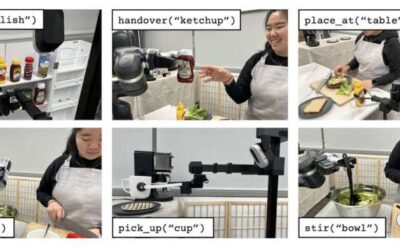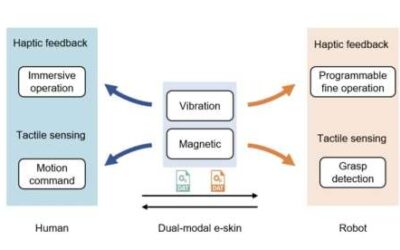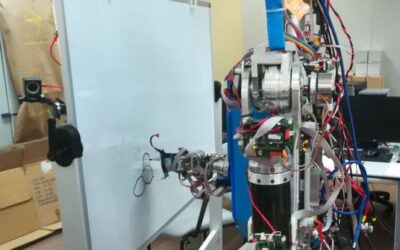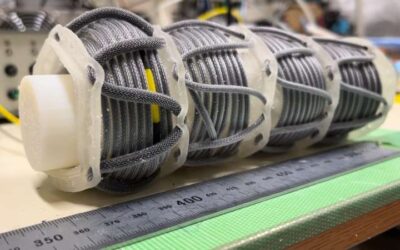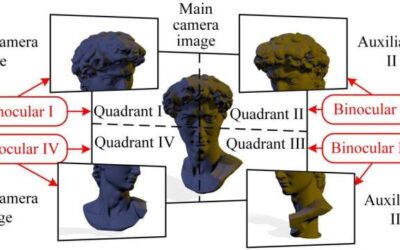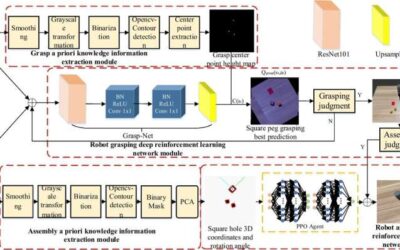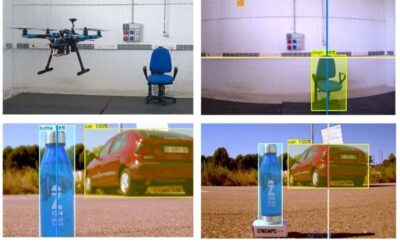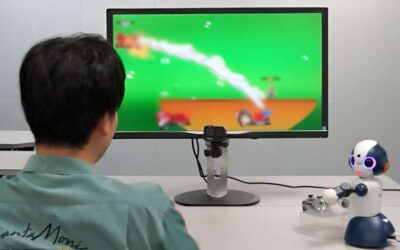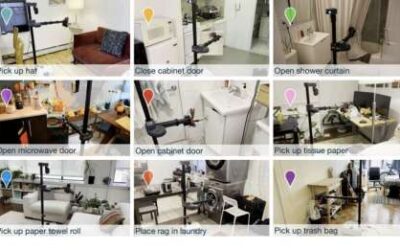Home robots could assist humans with the completion of various chores and manual tasks, ranging from washing dishes or doing the laundry to cooking, cleaning and tidying up. While many roboticists and computer scientists have tried to improve the skills of home robots...
Robotics
An e-skin that can detect tactile information and produce tactile feedback
In recent years, materials scientists and engineers have introduced increasingly sophisticated materials for robotic and prosthetic applications. This includes a wide range of electronic skins, or e-skins, designed to sense the surrounding environment and artificially...
Human-like real-time sketching by a humanoid robot
The rapid advancement of deep learning algorithms and generative models has enabled the automated production of increasingly striking AI-generated artistic content. Most of this AI-generated art, however, is created by algorithms and computational models, rather than...
An inchworm-inspired robot with enhanced transport capabilities
Soft robots inspired by animals can help to tackle real-world problems in efficient and innovative ways. Roboticists have been working to continuously broaden and improve these robots' capabilities, as this could open new avenues for the automation of tasks in various...
A multi-camera differential binocular vision sensor for robots and autonomous systems
Recent technological advances have enabled the development of increasingly sophisticated sensors, which can help to advance the sensing capabilities of robots, drones, autonomous vehicles, and other smart systems. Many of these sensors, however, rely on individual...
A deep reinforcement learning approach to enhance autonomous robotic grasping and assembly
Semi-autonomous and autonomous robots are being introduced in a growing number of real-world environments, including industrial settings. Industrial robots could speed up the manufacturing of various products by assisting human workers with basic tasks and lightening...
A fully autonomous drone system for cinematography and wildlife monitoring
Recent technological advances, such as increasingly sophisticated drones and cameras, have opened exciting new possibilities for cinematography. Most notably, film directors can now shoot scenes from a wide range of angles that were previously inaccessible and in far...
A robot that can play video games with humans
In recent years, engineers have developed a wide range of robotic systems that could soon assist humans with various everyday tasks. Rather than assisting with chores or other manual jobs, some of these robots could merely act as companions, helping older adults or...
Dobb-E: A framework to train multi-skilled robots for domestic use
Roboticists have been trying to develop robots that can tackle various everyday house chores, such as washing dishes or tidying up, for several years. However, so far none of the robots created has been commercialized adopted on a large scale.
Gathering more effective human demonstrations to teach robots new skills
To effectively assist humans in real-world settings, robots should be able to learn new skills and adapt their actions based on what users require them to do at different times. One way to achieve this would be to design computational approaches that allow robots to...

